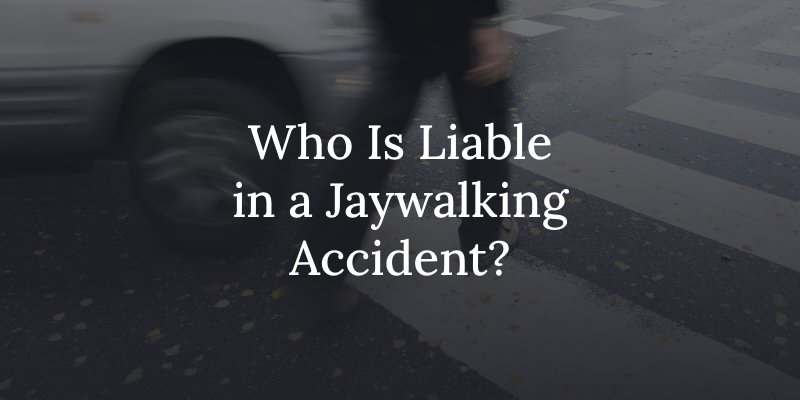Walking is a fitness-friendly, eco-conscious option for reaching a destination within a community. It’s also a soothing outdoor activity and a necessity for many dog owners. While many Missouri residents walk daily, when an exposed pedestrian and an average 4,000-pound vehicle collide, the pedestrian is vulnerable to serious or catastrophic injuries. In such cases, consulting a St. Louis pedestrian accident lawyer can help determine liability and seek compensation. Typically, the motorist is at fault in pedestrian accidents, but is that always the case? Who is liable for injuries if a pedestrian accident occurs when the pedestrian is jaywalking?

What Is Jaywalking?
In most cases In Missouri, signal lights control when a pedestrian can legally and safely cross the street in traffic or when vehicles have the right of way under a green light. However, pedestrians in Missouri have the right of way in crosswalks when signal lights aren’t present. Crosswalks are not always painted. Any intersection with a sidewalk that ends on one side of the intersection and begins again on the other side is considered an unpainted crosswalk. While pedestrians have the right of way in crosswalks, vehicles have the right of way in all other sections of roadway. Pedestrians must seek a crosswalk or cross only when the way is clear. Missouri §300.375. covers jaywalking by stating the following: “No pedestrian shall suddenly leave a curb or other place of safety and walk or run into the path of a vehicle which is so close that it is impossible for the driver to yield.” Leaving the curb when motorists have the right of way is a traffic violation—but does it always leave the jaywalker liable for damages?
Is a Jaywalker Liable for Damages in a Pedestrian Accident In Missouri?
Ultimately, drivers are responsible for taking all reasonable care to prevent causing injuries to pedestrians, even when a pedestrian is jaywalking. In most cases, a driver who hits a pedestrian has a portion of fault for the injuries and may be partly liable for the victim’s damages. Depending on the circumstances of the accident, a jaywalker may share liability. In these cases, Missouri’s pure comparative negligence insurance laws come into play to determine whether or not the jaywalking pedestrian can recover compensation for their damages.
Understanding Comparative Negligence Insurance Laws and Jaywalking
Missouri’s liability laws operate under a pure comparative negligence system that allows injury victims to recover compensation even if they share fault for the accident. After an accident, the insurance companies investigate the accident to determine each involved party’s percentage of fault. An injury victim can recover compensation from the at-fault party’s insurance, but the insurance company subtracts the injury victim’s percentage of fault from the amount they pay on the claim. For example, the jaywalker could be determined as 60% at fault for failing to cross the street at a crosswalk, which means an approaching vehicle has the right of way.
Still, the driver could be assigned 40% of the fault for the accident if they were speeding or failed to use their headlights at dusk. In this case, if the pedestrian’s damages like medical expenses, lost wages, and compensation for pain and suffering amount to $100,000, they can recover $60,000. On the other hand, suppose the driver suffered from airbag injuries after slamming on their brakes and hitting the pedestrian. They could recover 40% of their damages from the pedestrian. It’s always beneficial for an injured pedestrian, motorist, or anyone involved in a Missouri traffic accident to hire an injury attorney in St. Louis to represent their best interests during the investigation to determine fault and liability.

